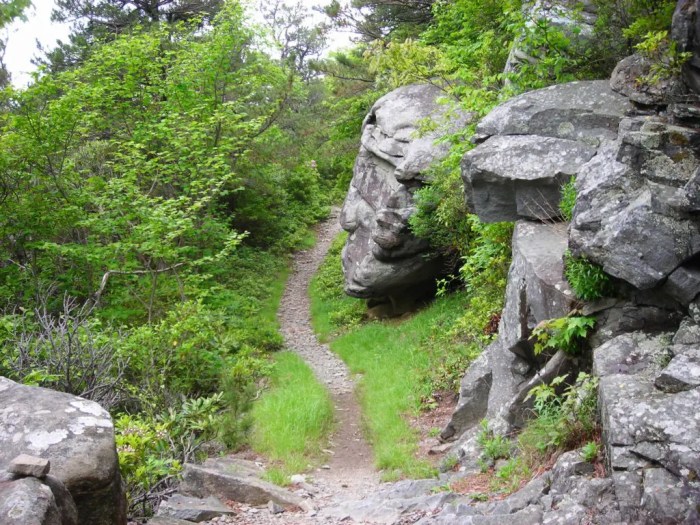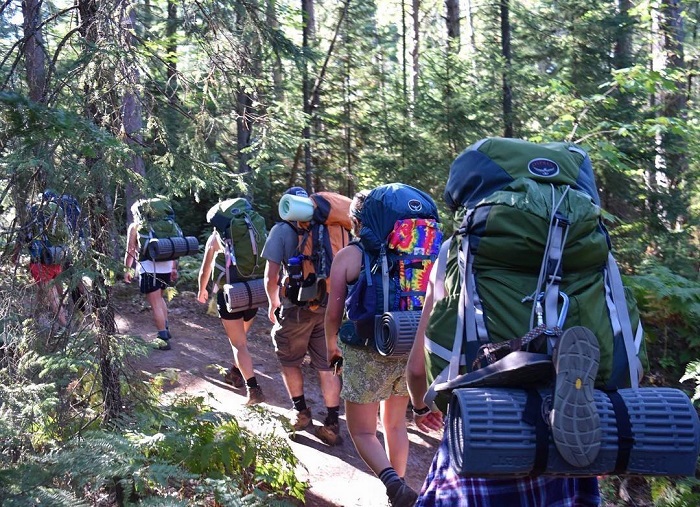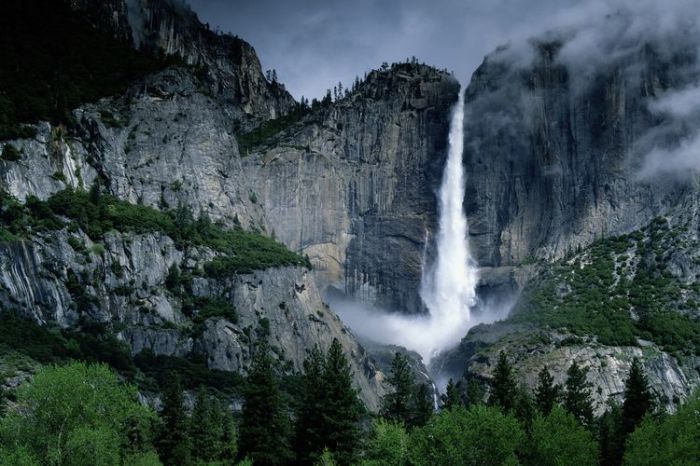Trails around me takes you on a journey through the local landscape, exploring nearby trails with varying difficulty levels. From paved pathways to rugged terrain, we’ll detail the types of trails, their lengths, and estimated times. Discover nearby amenities, safety considerations, and engaging activities. This comprehensive guide ensures your next hiking adventure is both enjoyable and safe.
This guide provides a detailed overview of trails in your area, covering everything from easy strolls to challenging climbs. We’ll explore the terrain, length, and amenities of each trail, offering a table for easy comparison. Safety precautions, essential gear, and potential hazards are also discussed, along with opportunities for activities like birdwatching and photography.
Exploring the Local Landscape

Source: oftr.ca
Understanding the local trail system is crucial for planning enjoyable and safe outdoor adventures. This exploration delves into the diverse trails surrounding the area, highlighting their varying difficulty levels, terrain types, and estimated durations.
Navigating the local trails requires awareness of the diverse landscapes encountered. From gentle paved paths to challenging rocky ascents, each trail offers a unique experience. This guide provides detailed information to help hikers choose the perfect route based on their individual preferences and skill levels.
Exploring the trails around me has sparked my interest in the broader context of hiking. Understanding the nuances of hiking, including its various forms and methodologies, is crucial for appreciating the surrounding terrain. A definitive look at the Hiking Definition reveals the range of activities encompassed within this popular outdoor pursuit. Ultimately, the trails around me provide a fantastic opportunity to engage in this rewarding pastime.
Trail Descriptions and Difficulty Levels
Local trails encompass a range of difficulty levels, catering to both experienced hikers and beginners. This section details the key characteristics of various trails, enabling informed decisions about which trails to pursue.
- Easy Trails: These trails are generally suitable for families and individuals new to hiking. They feature minimal elevation gain and relatively flat terrain, making them ideal for leisurely strolls or introductory excursions. Example: The paved path around the lake.
- Moderate Trails: These trails offer a balance of challenge and enjoyment. They involve moderate elevation changes and varied terrain, such as dirt paths with some gentle inclines. Example: The trail leading up to the overlook point.
- Challenging Trails: These trails demand greater physical exertion and experience. They often feature significant elevation gain, steep inclines, and rocky sections. Example: The ascent to the summit of the mountain.
Trail Terrain and Lengths
The terrain encountered on various trails significantly influences the experience. The choice of footwear and appropriate preparation are essential considerations when selecting a trail. Trail lengths and estimated times for different routes are also included.
- Paved Trails: These trails typically provide a smooth and easily navigable experience. They are excellent for leisurely walks and are often suitable for strollers and wheelchairs. Example: The paved path around the lake.
- Gravel Trails: These trails offer a moderate level of challenge, requiring attention to footing and balance. They often provide a more scenic experience compared to paved paths. Example: The gravel path winding through the woods.
- Dirt Trails: These trails offer a more natural and immersive hiking experience. They can vary in difficulty, depending on the incline and presence of obstacles like roots and rocks. Example: The trail leading up to the overlook point.
- Rocky Trails: These trails present a significant challenge due to uneven surfaces and potential for falls. Proper footwear and caution are essential. Example: The ascent to the summit of the mountain.
Trail Comparison Table
| Trail Name | Difficulty | Length (miles) | Terrain | Estimated Time (hours) |
|---|---|---|---|---|
| Lake Loop Trail | Easy | 2 | Paved | 1-2 |
| Overlook Trail | Moderate | 3 | Dirt/Gravel | 2-3 |
| Summit Trail | Challenging | 5 | Rocky/Dirt | 4-5 |
Trail Amenities and Features
Trail amenities significantly enhance the user experience, fostering accessibility and enjoyment for all. Well-maintained facilities, such as restrooms and water fountains, contribute to the overall appeal of a trail system. Strategic placement of these amenities ensures convenience and minimizes the need for extended treks to find necessary services. Furthermore, the presence of picnic areas allows for rest stops and social interaction, enhancing the social and recreational value of the trails.Trail features, beyond basic amenities, contribute to the trail’s unique character and appeal.
Scenic overlooks provide opportunities for breathtaking vistas, while historical markers offer context and cultural insights. The presence of wildlife further enriches the experience, offering opportunities for nature observation. Understanding these features is essential for planning an enriching and engaging experience.
Trail Amenities
Trail amenities encompass a range of facilities that contribute to the comfort and convenience of users. These facilities include essential services like water fountains and restrooms, crucial for maintaining hydration and hygiene during hikes or walks. Picnic areas, strategically positioned, provide spaces for relaxation, meals, and social gatherings, enhancing the overall recreational experience.
- Water fountains are often located at intervals along the trails, providing convenient access to fresh water. This is particularly important for extended hikes, ensuring users can stay hydrated throughout their journey. For instance, trails in urban areas often have fountains near trailheads and at regular intervals.
- Restrooms are frequently located at trailheads and prominent junctions, offering necessary hygiene facilities for users. Restrooms are essential, especially on longer trails, for maintaining cleanliness and convenience. Their presence is often linked to the trail’s length and popularity.
- Picnic areas, thoughtfully placed, allow users to enjoy a meal, rest, and socialize in a natural setting. Picnic areas are often near scenic overlooks or water bodies, enhancing the experience.
Scenic Overlooks and Historical Markers
Scenic overlooks and historical markers provide unique opportunities for enriching the trail experience. Overlooks offer breathtaking views, allowing for appreciation of the surrounding landscape. Historical markers provide context, highlighting significant events or figures associated with the area. The presence of these features significantly enhances the educational and recreational value of the trail.
- Scenic overlooks offer panoramic views, often situated on elevated points. They provide opportunities to appreciate the natural beauty and diversity of the environment, enhancing the overall aesthetic experience.
- Historical markers provide insights into the area’s past. These markers might highlight significant events, figures, or landmarks, enhancing the educational value of the trail.
Wildlife Sightings and Trail Regulations
Wildlife sightings, if present, provide an opportunity for nature observation. Specific rules and regulations, such as leash laws or no-dogs policies, help maintain the environment and safety of all users. These regulations are essential for managing wildlife interactions and ensuring the safety of both humans and animals.
- Wildlife sightings, if permitted, provide opportunities for observing local fauna. This can enrich the experience, particularly for nature enthusiasts.
- Leash laws or no-dogs policies are in place to ensure the safety of other trail users and maintain the environment’s integrity. These policies often address concerns about potential conflicts between humans and wildlife, or the impact of dogs on the natural ecosystem.
Trail Amenities and Features Summary
| Trail Name | Amenities | Features | Rules |
|---|---|---|---|
| Example Trail 1 | Water fountains, Restrooms, Picnic area | Scenic overlook, Historical markers | Leash required for dogs |
| Example Trail 2 | Restrooms, Picnic area | Scenic overlook | Leash required |
| Example Trail 3 | Water fountains, Restrooms | Wildlife sightings | No dogs allowed |
Trail Safety and Considerations

Source: hikingink.com
Navigating local trails safely requires proactive planning and awareness. Understanding potential hazards, equipping yourself appropriately, and anticipating environmental factors are crucial for a positive and incident-free experience. Proper preparation minimizes risks and maximizes enjoyment.
Weather Contingency Planning
Accurately forecasting and responding to changing weather conditions is vital. Trail conditions can rapidly deteriorate due to sudden shifts in temperature, precipitation, or wind. Research local weather patterns, especially for mountainous or forested areas, and adjust your plans accordingly. Be prepared for rain, snow, or extreme heat, and pack layers of clothing to adapt to these variations.
Understanding local weather alerts and advisories is essential for mitigating risks.
Wildlife Awareness
Encountering wildlife is a potential aspect of hiking. Familiarity with common local species and their behaviors can prevent conflicts. Maintain a safe distance from animals, avoid sudden movements, and never approach or feed them. Be mindful of signs of wildlife activity, such as tracks or scat, and take precautions to minimize disturbance. Carry bear spray if hiking in areas where encounters are more likely.
Essential Gear for Various Trail Conditions
Appropriate gear is critical for ensuring safety and comfort on the trails. The selection should reflect the anticipated conditions. For example, a summer hike will necessitate different gear than a winter excursion. The essential gear list includes, but is not limited to, comfortable and supportive footwear, a sufficient water supply, sunscreen, and a first-aid kit. Consider the distance and duration of your hike when determining the amount of water and food to carry.
Hydration and Nutrition Strategies
Staying hydrated and nourished is paramount during extended hikes. Dehydration can lead to serious health complications, while hunger can impair performance. Carry enough water for the duration of your hike, and replenish it frequently, especially during strenuous activities. Consume energy-rich snacks, such as dried fruits, energy bars, or nuts, to maintain energy levels. Plan your food intake to match your activity level and ensure you have enough energy to complete your hike.
Hazard Mitigation Strategies
Trail hazards can range from steep inclines and uneven terrain to unstable rock formations. Recognize these hazards and implement strategies to minimize risks. Use appropriate hiking poles for balance and stability, especially on uneven surfaces. Be cautious when navigating steep inclines, and consider using alternative routes if necessary. Check the trail conditions before heading out and avoid traversing unstable or slippery areas.
Safety Checklist for a Hiking Trip
- Appropriate Footwear: Proper footwear is essential for preventing injuries and ensuring stability on varied terrain. Hiking boots or sturdy athletic shoes provide the support needed for different trail conditions.
- Water Bottle: Carry a sufficient amount of water, especially for extended hikes. Replenish your water supply frequently to avoid dehydration.
- Sunscreen: Protect your skin from the sun’s harmful UV rays, which can lead to sunburn and long-term damage. Apply sunscreen liberally and frequently, especially during peak sun hours.
- First-Aid Kit: A well-stocked first-aid kit can be crucial for addressing minor injuries. Include bandages, antiseptic wipes, pain relievers, and any personal medications.
Trail Activities and Experiences
Exploring local trails offers a multitude of engaging experiences beyond simple exercise. From historical discoveries to opportunities for natural observation, these pathways can be gateways to deeper understanding and appreciation of the surrounding environment. The activities available vary widely, catering to diverse interests and levels of physical activity.
Different Activities on the Trails
A variety of activities can enrich your exploration of local trails. Birdwatching, for example, allows for the discovery of diverse avian species, fostering an appreciation for the local ecosystem. Photography enthusiasts can capture the beauty of landscapes, flora, and fauna, creating lasting memories and artistic expressions. Nature walks, focusing on leisurely exploration, provide opportunities for mindful observation and stress reduction.
These activities often intertwine, with birdwatching inspiring photography, and photography enhancing the appreciation of nature walks.
Historical and Cultural Significance
Many trails hold historical or cultural significance, reflecting the past and present of the region. These trails might follow old trade routes, connect important historical sites, or represent significant landmarks for local communities. Understanding these narratives adds depth and context to the experience, transforming a simple walk into a journey through time.
Exploring the trails around me often leads to discovering hidden gems. Planning local hikes near me, like those detailed in this helpful guide local hikes near me , can significantly enhance my appreciation for the natural beauty surrounding me. These explorations ultimately enrich my understanding of the trails around me.
Learning About Local Flora and Fauna
Trails provide unique opportunities for learning about the local flora and fauna. Identifying plant species and their ecological roles, and observing animal behavior, contributes to a deeper understanding of the interconnectedness of life within the ecosystem. These observations can enrich the experience, making it more than just a walk in the park.
Tips for Enhancing Your Hiking Experience
Proper preparation and mindful engagement can significantly enhance your hiking experience. Thorough planning, including the consideration of weather conditions, and the use of appropriate gear, is essential.
- Bring a journal to document your observations. Detailed records of your encounters, including species spotted, environmental conditions, and personal reflections, will provide a valuable record of your experience and foster a deeper connection with the natural world. These observations can be used to track changes in the environment over time, enhancing the long-term value of your exploration. For example, if you consistently observe a certain bird species at the same time each day, you can infer patterns in their daily routines, adding to your understanding of their behavior.
Exploring trails around me often reveals hidden gems. Discovering scenic walking trails near me, like those detailed in this guide scenic walking trails near me , can significantly enhance these explorations. These well-maintained paths, with their varied landscapes, ultimately enrich the overall experience of trails around me.
These observations can also be shared with others, enriching their understanding of the trails.
- Dress in layers to adjust to changing weather. Weather conditions can change rapidly in natural environments. Dressing in layers allows for easy adjustments to varying temperatures and conditions. This flexibility allows you to adapt effectively to unpredictable weather changes, ensuring a comfortable and safe experience. The ability to quickly adjust to fluctuating conditions will minimize the discomfort associated with unexpected shifts in temperature.
- Pack snacks and water. Maintaining energy levels throughout your hike is crucial for enjoyment and safety. Bringing sufficient snacks and water helps prevent fatigue and dehydration. This preparation ensures you are well-prepared for potential challenges and can continue your journey without undue stress. For example, if a trail is longer than expected or the weather is more strenuous than anticipated, you will have the resources needed to maintain energy and well-being.
Connecting with the Community

Source: atlantatrails.com
Local hiking groups and clubs offer a wealth of opportunities to enhance the overall hiking experience. Beyond the physical aspects of the trails, these communities provide a valuable social dimension, enriching the journey with shared experiences and knowledge. Connecting with fellow enthusiasts creates a supportive environment and fosters a deeper appreciation for the local landscape.Connecting with the community extends beyond simply enjoying the trails; it involves learning from others’ experiences, sharing tips, and gaining insights into the best routes and hidden gems.
This communal aspect makes the hiking experience more rewarding and memorable.
Local Hiking Groups and Clubs, Trails around me
Local hiking groups often organize guided hikes, allowing participants to explore trails with knowledgeable leaders. These groups provide an opportunity to learn about the history and ecology of the area, meeting like-minded individuals. They also frequently organize social events and outings, providing a platform for socializing and creating lasting friendships.
Community Events Related to Trails
Many communities host events focused on trails, such as trail cleanups, workshops on trail safety, or educational presentations on local flora and fauna. These events offer valuable opportunities to contribute to the preservation of trails, learn new skills, and gain a deeper understanding of the natural environment. Participation in these events fosters a sense of stewardship and community engagement.
Resources for Finding Trail Maps and Information
Numerous resources are available for discovering and navigating local trails. These include online databases, local libraries, and tourist information centers. Many hiking groups and clubs maintain their own websites or social media pages, providing up-to-date information on trail conditions, recent discoveries, and upcoming events. Local park and recreation departments are also essential sources of information.
Websites and Social Media Platforms for Hikers
Numerous online platforms serve as hubs for hikers to share experiences and recommendations. These platforms provide a space to discuss trail conditions, share photos and videos, and connect with other hikers. Social media groups, dedicated hiking forums, and specific websites often feature extensive libraries of trail maps, detailed descriptions, and user-generated content. For example, groups on Facebook or dedicated hiking blogs can provide real-time updates on trail conditions, weather forecasts, and recent discoveries.
Exploring trails around me is a rewarding activity, but discovering nearby hiking paths can be time-consuming. Fortunately, resources like find trails near me simplify the process, allowing you to quickly locate suitable trails in your area. This streamlines the search for perfect trails around me.
Benefits of Joining a Local Hiking Group
Joining a local hiking group provides numerous benefits. These groups offer opportunities for socializing, learning from experienced hikers, and developing a supportive network. They frequently organize guided hikes, sharing valuable insights into the natural environment and history of the area. Joining a group also often involves trail maintenance activities, fostering a sense of community stewardship. This can lead to a richer and more fulfilling hiking experience, promoting a deeper connection with the natural world.
Summary: Trails Around Me
This exploration of trails around you offers a diverse range of hiking experiences, catering to all skill levels. Whether you seek a leisurely stroll or a challenging ascent, this guide provides essential information for planning your next adventure. Remember to prioritize safety, be aware of the environment, and most importantly, enjoy the beauty of nature around you. Connect with your local community through hiking groups and events, and find resources for maps and trail information.
FAQ Section
What are the best trails for beginners?
This guide identifies easy trails with paved or well-maintained surfaces, perfect for novices. Look for trails with shorter distances and minimal elevation gain.
Are there any trails with historical significance?
Some trails may have historical markers or cultural relevance. This guide will point out trails with historical context, enriching your hike with learning experiences.
What kind of wildlife can I expect to see on these trails?
This guide provides information on potential wildlife sightings, enabling you to be prepared and respectful of the local ecosystem.
What are the parking options near these trails?
This guide will provide details on parking availability and locations near the trails, ensuring a seamless experience.






Leave a Reply